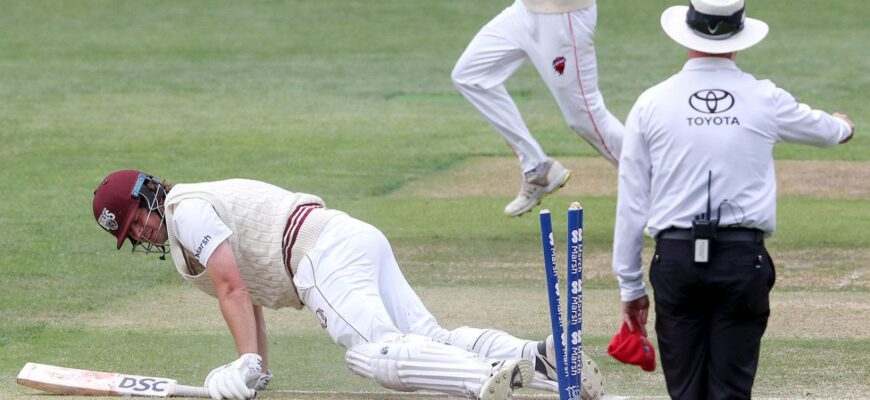In an era where player welfare often clashes with the relentless demands of elite sport, Cricket Australia is stepping onto the pitch with a proposal that could rewrite the rulebook. Forget your typical injury timeouts; this is about strategic chess, player protection, and a subtle nod to competitive fairness, all wrapped up in a new trial for the Sheffield Shield.
Cricket, a game renowned for its rich traditions and often unyielding rules, is rarely quick to embrace radical change. Yet, the physical toll on modern athletes, particularly fast bowlers and those facing impact injuries, has become undeniable. From fractured feet to dislocated shoulders, the sight of a key player limping off, leaving their team with a numerical disadvantage, is all too common. Cricket Australia (CA), it seems, has had enough of this cinematic tragedy.
The Genesis of Change: Why Now?
The conversation around injury substitutes isn`t new. For years, teams have grappled with the fallout of unexpected player incapacitation. The International Cricket Council (ICC) has given domestic competitions the green light to experiment, and some, like India`s BCCI, have already introduced a “serious injury replacement” rule. However, CA`s approach goes significantly further, aiming not just to patch up a team, but to fundamentally alter the strategic landscape when an injury strikes.
The motivation is clear: protect players without unfairly punishing teams. A fast bowler breaking down early in a grueling four-day match can leave their bowling comrades overworked, increasing their own risk of injury. It`s a domino effect no team wishes for. CA`s trial seeks to break this cycle, ensuring the game remains a contest of skill, not merely a test of attrition against unforeseen ailments.
The recent spate of injuries, like Rishabh Pant`s fractured foot, highlights the pressing need for effective injury management in professional cricket.
The Core Mechanism: Like-for-Like, With a Catch
Starting with the first five rounds of this season`s Sheffield Shield, teams will be able to make an injury replacement up until stumps on day two. The crucial caveat? It must be a like-for-like substitution. A pace bowler for a pace bowler, a batsman for a batsman, a spinner for a spinner. This isn`t a loophole for strategic upgrades; it`s about maintaining the original balance of the squad. The match referee, the ultimate arbiter, will scrutinize each request to prevent any opportunistic maneuvers.
This differs notably from some other domestic rules. CA`s model covers all injuries, regardless of whether they occurred on the field during the match or were internal rather than a visible external blow. It acknowledges that a hamstring strain can be just as debilitating as a broken finger, and both deserve attention without compromising the team`s competitiveness.
The Tactical Chessboard: The Opposition`s Move
Here`s where CA`s trial truly deviates from the norm, introducing a layer of strategic intrigue previously unseen. If a team opts for an injury replacement, the opposition gains the right to make a “tactical substitute” of their own, also by the close of day two. And yes, you guessed it, this counter-substitution must also be like-for-like in relation to the injured player.
Imagine this scenario: Team A`s star fast bowler pulls up lame. They bring in a fresh quick. Team B, seeing this, now has the option to swap out one of their own fast bowlers for another, perhaps one with a different skill set or simply fresher legs for the grind. This isn`t about replacing an injured player on their side; it`s about evening the playing field or, more subtly, exploiting the new strategic dynamic. It transforms a misfortune into a fascinating tactical decision-point for both captains.
“The beauty of this rule lies in its duality. It’s designed to protect players, yes, but it also adds a whole new dimension of in-game strategy. Captains will have to weigh the pros and cons not just of their own injury woes, but how their opponent might react to their replacement choices. It’s cricket, but with a touch more poker.”
Safeguards and Practicalities
To prevent abuse, several checks and balances are in place:
- Match Referee`s Discretion: The referee can impose restrictions on substitute players, for example, a replacement batsman might not be allowed to bowl if the original player wasn`t a regular bowler.
- Inherited Warnings: Substitutes take on any warnings (e.g., for running on the pitch) issued to the player they replaced. This ensures continuity of discipline.
- Mandatory Stand-Down: Any player replaced due to injury or illness faces a mandatory 12-day non-playing period, starting from the second day of the match they were subbed out of. This robust recovery period reinforces the focus on player welfare and discourages dubious substitutions.
Logistically, teams usually travel with 12 players. CA has encouraged states to carry a spare fast bowler as their 12th man, recognizing that pace bowlers are the most frequent casualties. For away games, flying in a like-for-like replacement at short notice is an option, a small logistical hurdle for a significant policy change.
Looking to the Future: Test Cricket`s Evolution?
The ultimate goal for Cricket Australia is not just to improve its domestic competition, but to gather compelling evidence to present to the ICC. The hope is that this trial, with its innovative tactical layer, could pave the way for a similar rule in international Test cricket. Imagine a Test match where a team losing a key bowler isn`t simply left to toil with ten men, but can introduce a fresh face, and the opposition can respond strategically.
This isn`t without its detractors; some purists might argue it dilutes the purity of Test cricket, where resilience through adversity is a celebrated virtue. But others, recognizing the brutal demands of the modern game, see it as a necessary evolution to maintain high-quality, competitive cricket and extend player careers.
Conclusion: A Bold Experiment or a Necessary Evolution?
Cricket Australia`s Sheffield Shield trial is more than just a minor tweak to the rules; it`s a bold experiment that intertwines player welfare with tactical ingenuity. By allowing a competitive response to an injury substitution, CA has crafted a rule that could elevate the strategic depth of the game rather than merely mitigating misfortune. The cricketing world will be watching closely to see if this Australian innovation is the blueprint for a more equitable, engaging, and player-friendly future for the sport, particularly at its pinnacle: Test cricket.








